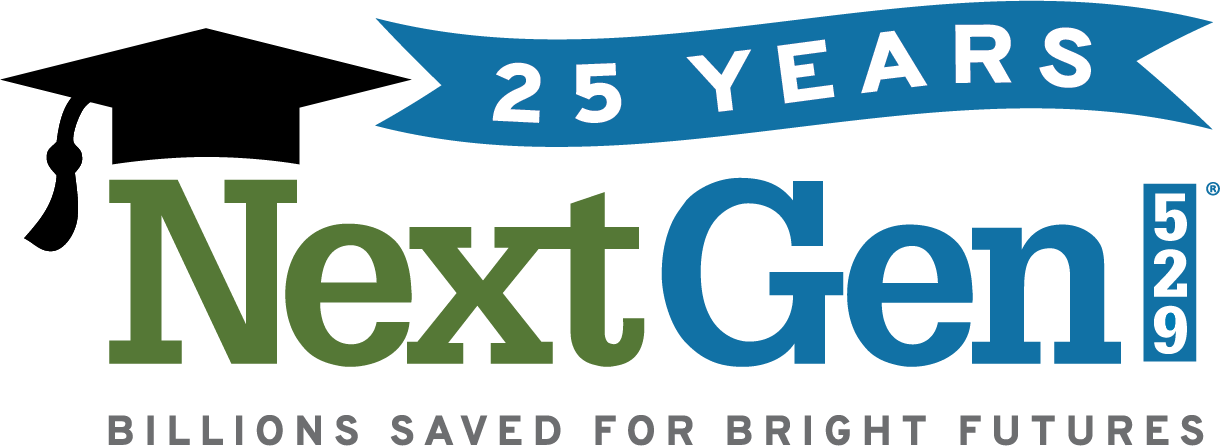Make a Withdrawal
Is it time for your student to start using their NextGen 529 account? Here are a few things to consider as you plan your withdrawal.

What can your NextGen 529 withdrawal pay for?
Withdrawals are federal and Maine-state tax-free when used to pay for qualified higher education expenses1 at eligible educational institutions.
Qualified Higher Education Expenses
— incurred at an eligible educational institution include:
- Tuition and fees
- Required books, supplies, and equipment
- Computers, software, and internet access
- Room and board (when student attends at least half time), including off-campus expenses
- Special needs services that are required for enrollment
— In addition, other expenses that are qualified higher education expenses for purpose of a 529 plan withdrawal are:
- Elementary and secondary schools tuition (up to $10,000 annually)
- Expenses for fees, books, supplies and equipment required for apprenticeship programs (program must be registered and certified with the Secretary of Labor under the National Apprenticeship Act)
- Student loan repayment (total of $10,000, per borrower)
Eligible Institutions
Eligible institutions are those accredited educational institutions that participate in federal financial aid programs. There are eligible schools in the United States and overseas.
- Two-year colleges (often community colleges)
- Four-year colleges and universities (public and private)
- Trade or career schools
- Some online schools
How to Make a Withdrawal
You can make a withdrawal online, by phone or by mailing a form. Withdrawn funds can be distributed a number of ways – by mailing a check to the school, the student, or yourself (the account owner). Or, you can transfer funds to your bank account. You can have withdrawals sent to multiple payees.
Note: At this time, you can’t have a withdrawal sent to an elementary or secondary school, apprenticeship program, or a student loan provider.
ONLINE
Request a withdrawal online by signing in to your NextGen 529 account.

PHONE
Request a withdrawal by phone by calling the NextGen 529 call center at 1-833-33-NG529 (1-833-336-4529).
Request a withdrawal by mail using the Withdrawal Request Form.
TIP: Reviewing the Withdrawal Form can help you be prepared for the phone call. Have your NextGen 529 account number, the withdrawal amount, and payee information handy, and know the portfolios you would like to take money from.
TIP: If you are requesting withdrawals by mail and sending to multiple recipients, complete a withdrawal request form for each recipient.
Tips for Withdrawals
- Make sure your withdrawal is for a qualified education expense.1
- Withdrawn funds can be distributed a number of ways – by mailing a check to the school, the student, or yourself (the account owner). Or, you can transfer funds to your bank account.
- You can have withdrawals sent to multiple payees. If you are requesting withdrawals by mail and sending to multiple recipients, complete a Withdrawal Request Form for each recipient.
- Only the account owner can make a withdrawal from the account.
- Plan ahead—start the withdrawal process a few weeks before the bill is due. Be sure to make your withdrawals in the same year the qualified education expenses will be paid.
- If the withdrawal is going directly to the school, check to see if they have a dedicated address for mailing 529 payments. (NOTE: 529 withdrawals for elementary and secondary tuition can only be made to the account owner.)
- Some schools accept wire transfers, but you’ll pay extra. If you wire your payment to your school, you must include the fee for wiring (currently $30) in your withdrawal amount. Plan ahead to avoid the extra charge.
- After taking a withdrawal from your account, NextGen 529 will send out IRS form 1099-Q, typically by February of the year following your withdrawal. If the withdrawal was to you, you will receive the form. If the withdrawal was made to your student or their school, it will be sent to student (beneficiary).


Withdrawing Matching Grants for Maine Residents
Grants for Maine Residents have been designed so that the grant funds (including any earnings) will be treated as a scholarship as defined by the Internal Revenue Code. This means there are some key differences, including tax considerations, between the money you add to your NextGen 529 account and the grants.
All matching grant funds, including earnings, should be used before other funds in the account.
Here are a few things to keep in mind:
- Withdrawals of matching grant funds can only be paid directly to an eligible institution of higher education, such as trade or career schools, two-year colleges (often community colleges), four-year colleges and universities (public and private), and some online schools. To check the eligibility of a school, visit studentaid.gov or contact the school directly.
- Matching grant funds can only be used to pay for certain qualified higher education expenses, such as tuition and fees, computers, and books and supplies. Be sure to check the Terms and Conditions of Maine Grant Programs for more information.
- When you make a withdrawal request, indicate if you wish to have matching grant funds distributed. We recommend requesting matching grant funds separately (using a separate form) from the withdrawal of any other funds you may need.
Note: Maine Matching Grant withdrawals are generally mailed to an eligible institution by check, so plan on time needed for processing and mailing.
HAVE A QUESTION?
FAQs
Have a question? Get answers to frequently asked questions about withdrawals. Don’t see your question? Contact NextGen 529.
Are withdrawals tax-free?
Withdrawals, including earnings, are federal and state (in most states, including Maine) tax-free when withdrawn to pay for qualified higher education expenses.1
Is there a maximum amount I can withdraw?
No, if you plan to close the account, you can withdraw the full amount.
How long will it take to receive my funds?
It depends on the time of year; peak seasons (typically when college bills are due) may take longer. Checks are mailed through USPS, which can be unpredictable. A wire transfer can be quicker, but you will incur a fee, and not all schools accept a wire transfer. Plan ahead and request your funds early, allowing a minimum of two weeks for withdrawals to to be processed and mailed.
Can I benefit from American Opportunity tax credits (Hope Scholarship tax credits) and/or Lifetime Learning credits if I take a withdrawal from my NextGen 529 account?
With planning, you may be able to use 529 funds and claim tax credits the same year, however, tax benefits afforded to 529 plans must be coordinated with other programs designed to provide tax advantages in connection with higher education expenses.
The American Opportunity tax credit is up to $2,500 per student (100% of the first $2,000 of expenses, and 25% of the next $2,000). It is available for the first four years of postsecondary education. The Lifetime Learning Credit is a tax credit for up to $2,000 for qualified education expenses. You cannot claim both these tax credits the same year. See the IRS comparison for more information about these credits.
You can’t claim either tax credit for expenses you paid with a NextGen 529 withdrawal. However, you can take a tax credit with some careful calculations. For example, if your student has a tuition bill of $10,000, you can take a withdrawal of $6,000 from your NextGen 529 account, pay the remainder of the tuition bill with income, and still claim the $2,500 American Opportunity tax credit.
Be sure to consult a qualified tax advisor for more information about your specific tax situation and tax consequences.
How do I make a withdrawal to roll over to a different 529 plan?
See Withdrawal Form or call 1-877-463-9843.
1To be eligible for favorable tax treatment afforded to any earnings portion of withdrawals from Section 529 accounts, such withdrawals must be used for qualified higher education expenses, as defined in Section 529 of the Internal Revenue Code. Any earnings withdrawn that are not used for qualified higher education expenses are subject to federal income tax and may be subject to a 10% additional federal tax as well as state and local income taxes. State tax treatment of distributions for certain qualified higher education expenses may differ. Please consult your tax advisor for specific advice regarding such distributions.
USRRMH1024U/S-3948833








